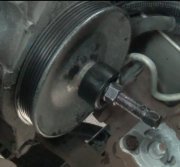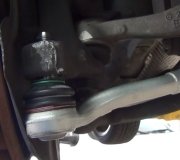Absolutely. Each inner and outer tie rod are threaded together to form the final alignment adjustment called "toe". That is the direction the wheel is steering when the steering wheel is straight ahead, and is critical for tire wear.
If either side, (or both sides) is misadjusted, "total toe", meaning the two wheels taken together, will cause both tires to steer in different directions. For example, if the fronts of both wheels are closer together than the rears of the front wheels, the outer edges will scrub off. If you exaggerate it for clarity, think of holding a pencil upright on a table with the eraser end down, then dragging it sideways. The leading edge of the eraser will scrub away and the trailing edge will lift up and not wear. The same thing happens to your tires. When toe is in too much, (fronts of the tires too close together), the outer edges are the leading edges and will scrub off. You'll see rapid tire wear on the outer edges of BOTH front tires.
To put it in perspective, a typical toe specification for a front-wheel-drive car might be 1/16" plus or minus 1/16". Road force and braking force are expected to tug the wheels back a little resulting in that 1/16" disappearing while driving and making the wheels perfectly parallel to each other. At as little as 1/8" toe you can start to get a little excessive tire wear. 1/4" toe will result in a lot of tire wear. The tires will wear out in about half of their expected life. A sloppy ball and socket joint in a single tie rod end could allow toe to go out-of-specs by over 1/2" very easily. By that time I would be nervous about driving the car because that joint is ready to separate leading to loss of control and a crash. Then it's a matter of heading into the ditch or into oncoming traffic. By that time you'd have gone through multiple pairs of tires.
Saturday, March 19th, 2016 AT 2:46 AM


